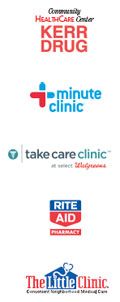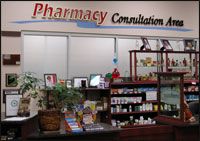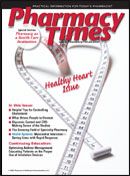Publication
Article
Pharmacy Times
Clinics Signal Pharmacy's Growing Role in Health Care
Author(s):
The walk-in-clinic model presents new opportunities for pharmacists to expand their roles as accessible health care providers.

One of the most exciting trends inhealth care today is the walk-inclinic, a place where patientscan receive care for common ailmentslike sore throats and allergies, get theirflu shot, or have their blood pressurechecked—on the spot, after hours, andwithout an appointment. Not surprisingly,the local pharmacy is at the frontlineof this movement.

These clinics provide a convenient andaffordable option for patients lookingfor quick access to meet many of theirhealth care needs. They can be foundat 1060 retail outlets with pharmaciesacross the country. The numbers aregrowing, according to the ConvenientCare Association (CCA), whose membersrepresent more than 95% of theindustry. The CCA reports that fewerthan 200 clinics were in existence whenthe association was established in 2006,a clear indication of the industry'shealthy growth.
"The demand for affordable, accessiblehealth care is why convenient care clinicshave flourished," notes CCA executivedirector Tine Hansen-Turton, MGA, JD."Patients with very basic medical needsare in serious need of alternatives toovercrowded doctors' offices or emergencyrooms." She added that clinicsare thriving around the country and areparticularly well-established in the Southand the Midwest, with a strong presencein California and Texas as well.
Surveys reveal walk-in clinics are verypopular with patients. This year, a WSJ.com/Harris Interactive health care studyfound that US adults who have usedclinics in a pharmacy or retail chainare generally pleased with the qualityof care they received. This study foundthat clinics are most frequently used forvaccinations (40%) and treatments fora common medical condition like anear infection or cold (39%). The CCAhas compiled a list of treatments thatpatients most commonly access throughtheir local walk-in clinic (Table).
Patients also go to retail clinics forroutine sports, school, or camp physicalexaminations. The convenience ofclinics is a big plus. The CCA notes thatclinics are generally open 7 days a week,with extended weekday hours, and visitsgenerally take 15 to 20 minutes.
Affordable, High-Quality Care
Table
Top Treatments atConvenient Care Clinics
- Sore throat
- Common colds/cold symptoms
- Flu symptoms
- Cough
- Sinus infection
- Allergies
- Immunizations
- Blood pressure testing
Clinics generally accept many insuranceplans. In fact, the biggest change fromlast year noted in the Harris survey isthe percentage of adults whose healthinsurance covered some or all of thecosts at the clinic, rising from 42% in2007 to 62% in 2008. Clinics also area more affordable option for patientswithout health insurance, with thesepatients typically paying $40 to $75 fora clinic visit, which is far less than theywould be billed for emergency roomcare. In addition, clinics reduce costs byproviding preventive care, like flu shots,and facilitating earlier access to care.
One of the first retail chains to advancethe concept of community pharmacycare was Kerr Drug, which in 1998launched its Enhanced PharmaceuticalCare Center model at several of its pharmacies,offering patients access to a fullrange of clinical services in the convenienceof their local drugstore. Fullystaffed by pharmacy and pharmacyresidents from partnering universities,these centers provided patients accessto screenings for conditions such asdiabetes, cholesterol, and osteoporosis,as well as wellness programs in smokingcessation, weight loss, and asthma.Today, Kerr health care centers can befound at store locations throughout theCarolinas.
Over the summer, Walgreens' TakeCare Clinics reached an important milestone,marking the 500,000th patienttreated since the first clinic openedin November 2005. The company nowhas more than 300 Take Care Clinicsin 15 states, staffed by nationally certifiednurse practitioners or physicianassistants. Take Care's model encouragesall patients to have a "health carehome," a medical provider they can seeregularly for ongoing medical needs androutine exams. If a patient's conditionfalls outside of the scope of practice atthe clinic, the patient is referred back tohis or her primary health care providerfor follow-on care.
MinuteClinic, a subsidiary of CVSCaremark Corp, is the largest retailhealth clinic in the United States, with anational network extending to 25 states."Our role in creating a more convenientmodel for high-quality health care deliveryis particularly evident this time ofyear, as thousands of patients sufferingfrom colds and flu visit our clinics neartheir home, school, or office, or whiletraveling on business or vacation," saidJames Hartert, MD, MinuteClinic's chiefmedical officer.
Rite Aid currently partners withretail-based medical clinics in California,Idaho, and the state of Washington,where it recently opened 2 MultiCareExpress Clinics at stores in Tacomaand Lakewood. MultiCare's secure electronichealth record system—MultiCareConnect—gives patients the convenienceof having the same computerizedhealth information available each timethey visit a health care provider withinthe MultiCare system. Electronic medicalrecords, which can be shared witha patient's primary care practitioner atthe patient's request, are used widely byclinics in order to facilitate continuityof care.
Another leading provider, The LittleClinic, currently operates 26 walk-inmedical clinics in Kroger's family ofstores across 7 states. In announcingits formal partnership with The LittleClinic last spring, Kroger noted plans fora substantial clinic rollout, recognizinga growing desire among patients to beproactive about managing their healthand wellness.
Looking Ahead

Not surprisingly, clinics are proving tobe an effective way for pharmacies togrow their business. The 2008 RetailClinic Consumer Tracking Study byMarket Strategies International foundthat 86% of patients rated their retailclinic visit as being of equal or betterquality than a visit to their regulardoctor. This survey also found that, ofthose patients who do receive scripts orrequire other medications during a retailclinic visit, 80% filled those prescriptionsor OTC products in the same storewhere a clinic is located.
"We expect that as the convenientcare model of health care becomesmore fully integrated into the US healthcare system, these clinics will continueto open in new locations and newmarkets, owing to consumer demand,"notes Hansen-Turton. "This model ofcare is nimble enough to adapt to changingconsumer needs and provides a usefulcomplement to existing primary careproviders."







